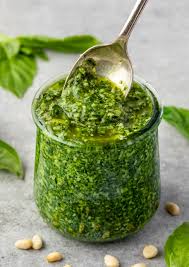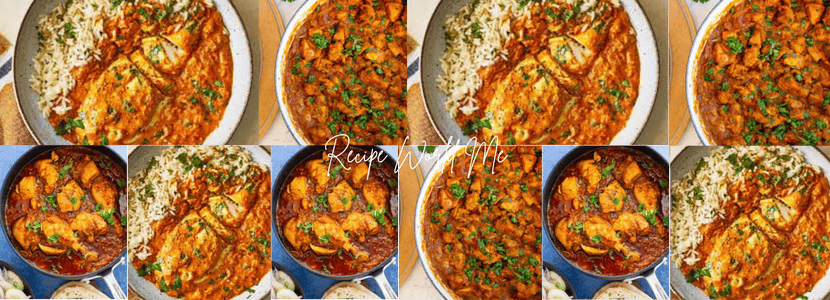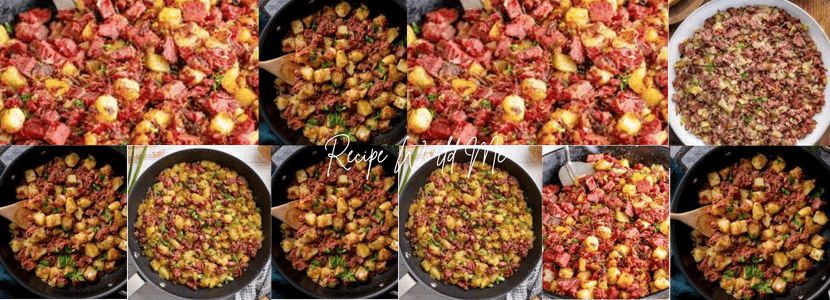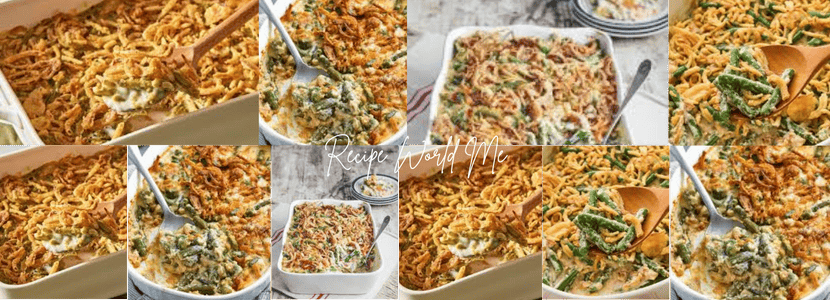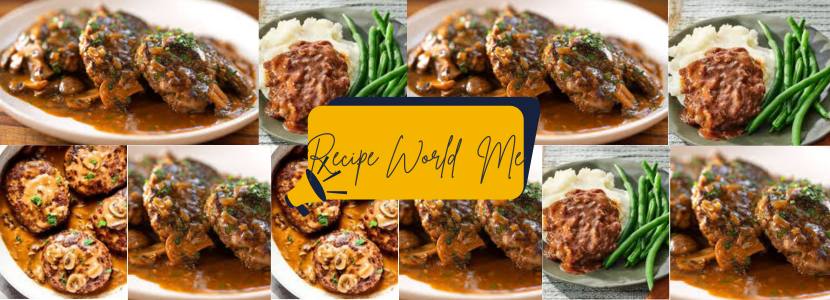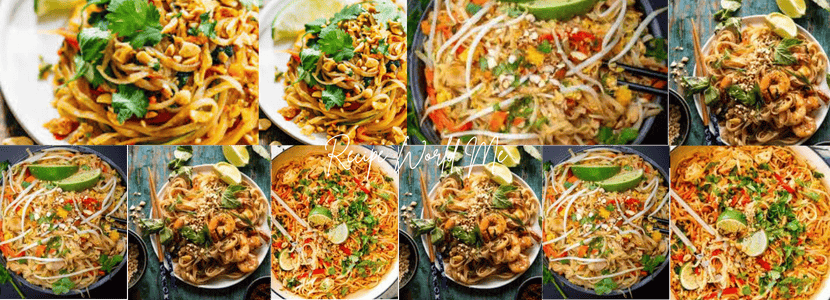
Mastering Authentic Pad Thai: Your Guide to a Flavorful Thai Classic
Did you ever have the feeling like you wanted all these tastes: sweet, sour, salty and spicy to taste these in only one bite? It is pad thai magic. This is the legendarty stir fried noodle dish that is a world-class superstar with its signature curb appeal and global appeal that is an icon of Thai cuisine and delightful all over the world. However, to tell the truth, sometimes the takeout-like variant is not that rich and vivid as it is in a really traditional meal. What it takes to make a really incredible pad thai is not a complicated, daunting process; it is in the sauce and the fresh ingredients. It is a recipe that shares the tale of moderation and it can be the tale that you can transform in your kitchen itself. If you’ve been dreaming of recreating that unforgettable street food flavor, then this comprehensive guide to mastering an authentic pad thai is exactly what you need. Be prepared to be frying to gastronomic nirvana.
The Fascinating History Behind Pad Thai
Pad Thai has its history rooted to the Thai nationalism. Although it is now commonly eaten as street food, it is a relatively new dish. It was made in 1930s and 40s when the country was passing through economic and political reforms referred to the then prime minister Plaek Phibunsongkhram. He wanted the new national identity to grow as well as increase the economy of the country. The government embarked on promoting the consumption of rice noodles as a symbol of modernity and reducing the level of consumption of rice. It was due to this endeavour that Pad Thai, or rather Thai stir-fry was developed. It was meant to be an ideal balance of tastes with Thai cuisine that was not too expensive to make and could be prepared quickly. It soon became a popular street food and the popularity of this dish skyrocketed exceeding the expectations and becoming the international phenomenon as we all know it now.
The Core Elements of an Exceptional Pad Thai
Pad thai is a perfectly well-balanced concert of flavors and textures. The different parts are critical in giving that signature experience.
1-The Noodles: The Noodles are rice. The traditional choice is flat and thin rice noodles. They should not be boiled but soaked to give the right al dente consistency, which retain its form during the stir-frying process without getting mushy.
2-The Pad Thai Sauce: This is the soul of the dish. It is an exact balance between sweet, sour and savory. Its main ingredients include tamarind paste (because, as you could make out, it makes everything taste distinctively tangy sour), fish sauce (because it creates this rich, salty umami), and palm sugar or brown sugar (because, well, that is the required sweetness). It also may add a bit of chili powder to get it hot.
3-Protein: Shrimp or chicken is most popular, however tofu can also be an awesome meatless alternative. Protein is cooked and exposed to heat first in order to make it soft and well cooked.
4-The Fresh Toppings: And here is the magic happens! Bean sprouts fresh, chives, crushed peanuts and lime wedges are mandatory. It gives an element of freshness and crunch which makes it go so well with the soft noodles and thick sauce.
A Step-by-Step Authentic Pad Thai Recipe
Pad Thai Ingredients:
For the Pad Thai Sauce:
| Ingredient | Amount | Notes |
|---|---|---|
| Tamarind paste | 3 tbsp | Substitute with rice vinegar + pinch of sugar if needed |
| Fish sauce | 3 tbsp | — |
| Palm sugar | 2 tbsp | Brown sugar can be used as a substitute |
| Water | 1 tbsp | — |
| Chili flakes (optional) | ½ tsp | Adjust to taste |
For the Noodles & Stir-Fry:
| Ingredient | Amount | Notes |
|---|---|---|
| Dried flat rice noodles | 8 oz | — |
| Vegetable oil | 2 tbsp | — |
| Garlic cloves | 3–4 | Minced |
| Chicken breast or shrimp | ½ lb | Boneless, skinless |
| Egg | 1 | — |
| Firm tofu (optional) | ½ block | Cubed and pan-fried |
| Fresh bean sprouts | 1 cup | — |
| Chives | ¼ cup | Chopped |
| Roasted peanuts | ¼ cup | Crushed |
| Lime wedges | — | For serving |
Easy-to-Follow Cooking Instructions:
1-Cook the Noodles: To the rice noodles add hot water to cover and set aside long enough to cook the noodles (10 minutes). They should be left to soak to become loosened up, but not melted; approximately 20-30 minutes. No soaking. Drain and reserve.
2-Make the Pad Thai Sauce: In a small bowl, whisk together the tamarind paste, fish sauce, palm sugar, water, and chili flakes (if using). Stir until sugar has dissolved. Set aside.
3-Cook the Protein by Stir-Sautéing: Add to the wok or big skillet the vegetable oil over medium-high heat. Stir fry half a minute with minced garlic to become fragrant. Place your chicken or shrimp in and stir-fry until protein is cooked. Add the pan-fried tofu, should you have it. Put the cooked ingredient to one half of the wok.
4-Frying the Egg: Break the egg on the clean side of the wok. Stir it up with your spatula – only when it is cooked – then combine it with the others.
5-Append the Noodles and Sauce: Place noodles which have been soaked in water and drained in the wok. Pour the pad thai sauce over the noodles and toss everything together vigorously for 2-3 minutes. This is an action that needs rapid, continuous movement so that all the noodles are covered with the sauce.
6-Sprout and Chive Smack Luck: place in the wok bean sprouts and minced chives. Toss a minute or two more until the ends are barely wilted yet there is good crunch.
7-Serve and Garnish: Put the pad thai into plates. Cover with plenty of crushed roasted peanuts with a half of lime on the side. The lime juice plays a significant role, too, because it lightens all the rest of the flavors.
Know This? The name tamarind is derived from the Arabic term “tamar hindī,” or “Indian date.” Tamarind paste is made from the fruit of the tamarind tree and provides the essential sour flavor in authentic Pad Thai.
Tips for Perfecting Your Pad Thai
1-Avoid Over-Soaking the Noodles: It is the easiest way to do it. The over soaked noodles will turn mushy in the wok. They need to be flexible but with the somewhat of a bite prior to stir-frying them.
2-Pad thai is a quick dish to cook: Keep it Moving. Make sure to keep your ingredients moving as you do not want them getting stuck in the wok, nor do you want that food to cook unevenly.
3-Wok: Because of the curved shape and high sided manner, a wok is highly recommendable in handling this meal.
4-Taste and Adjust: before you add the noodles to the sauce, taste it. Authentic pad thai is all about balance. Anyway, in case it is too salty, make it a bit sweeter. In case it lacks the tanginess it might need, some rice vinegar can be added.
Your Kitchen’s New Favorite Thai Dish
Making an authentic pad thai at home is a rewarding experience. It is a gastronomic adventure, which gifts you on how one should be able to balance things and the use of fresh ingredients. Whenever you fry a batch you stir-fry not only your sizzling masterpiece but also a tasty tradition of pleasure bite after bite that has already made the hearts of millions of people delighted. So, just take your time to enjoy sweet and savory smell, the bright colors and the unbelievable textures. Your homemade pad thai will be a dish to be proud of, a flavorful masterpiece that brings a taste of Thailand right to your dinner table. And savor each mouthwateringly savory bite!
Frequently Asked Questions
Q.What are fish sauce and tamarind paste? Are there any substitutes?
A.And these are the two ingredients that form the heart and soul of real Pad Thai! This is a salty, savoury liquid or sauce, made by fermenting fish and commonly used in Japanese cuisine in the form of fish sauce, which has an intense flavour of umami. Tamarind paste is quite sour sweet paste made out of tamarind fruit that adds the desired tang to the dish. To get the best flavour though it is probably worth tracking them down in the Asian section of most supermarkets, otherwise in an emergency you can use soy sauce instead of fish sauce (although it will not be the same) and a combination of lime juice and brown sugar to replace the tamarind.
Q.My rice noodles are always either mushy or a sticky mess. What’s the secret?
A.This is the Pad Thai trap most often! The trick is that it is soaked, as opposed to being boiled like pasta. Add the dry rice stick noodles into a bowl of hot (not boiling) water, and allow the noodles to soak until they become bendable but have a nice firm bite (you should have soaked the noodles anywhere between 20-30 minutes). They will complete cooking in the hot pan and with the sauce. To get rid of excess starch and to avoid clumping, rinsing them briefly with cold water after soaking also removes superfluous starch.
Q.Do I need a special wok to make Pad Thai?
A.Although a traditional wok is amazing because of the ability to heat up so much and the inclined sides, it is certainly not required to make fantastic Pad Thai at home. A big, heavy bottom frying pan or Skillet will do just as good. What is most important is to ensure that you use your largest pan and have the ingredients with maximum space to fry instead of steam.
Q.The recipe calls for palm sugar. Can I just use regular brown sugar?
A.Yes, absolutely. Traditionally, palm sugar was used, which has a wonderfully sweet, mild caramel taste, but light or dark brown sugar is an entirely reasonable and fantastic alternative, one that you are probably already sitting in your cupboard. It will melt sweetly in the sauce and will add that sweet factor balance the sour and salty tastes.
Q.Can I make a vegetarian or different meat version of this recipe?
A.Of course! Pad Thai is immensely flexible. To make a great vegetarian variation, merely replace the shrimp or chicken with firm tofu pressed and cut into cubes. And pan fry the tofu until golden before you move on with the rest of the recipe. Very thin slices of pork or beef are also a great substitute to chicken.
Q.My Pad Thai tastes good, but not quite like the restaurant’s version. What am I missing?
A.Such restaurant quality taste can boil down to two things: large amounts of high temperatures, and balanced flavour. Mimicking the hot heat of a wok in a restaurant at home can be difficult; however, by ensuring that your pan is heated to a high temperature prior you began working on it. Of greater importance, taste your sauce before adding it in the noodles! It must be a daring mixture of sour, sweet and salty. And do not leave out the last glass of fresh lime juice and handful of crushed peanuts on top–it will make all the difference.

